Are Swede (Rutabaga) and Turnip the Same Thing? Swedes (as known as a Rutabagas and Swedish Turnips) and Turnips are well known Winter vegetables that have been enjoyed throughout Europe for many years. However, given that they have similar names, come from the same family and are cooked in much the same way, it begs the question are they just different names for the same thing?
Turnips and Swedes are distinctly different species. The Turnip (Brassica rapa) has 20 chromosomes where as the Swede has 38 chromosome indicating there is a fundamental difference in the genealogy of the two vegetables.
The Turnip has a long history with many varieties being known to both the Roman and Greeks. The Swede on the other hand appeared sometime in the 16th or 17th century in Sweden, hence the name Swedish Turnip or Swede for short.
A relatively recent investigation of the origins of the Swede suggest that it was created through the hybridization of a turnip with 20 chromosomes and a specific type of cabbage with 18 chromosomes producing the Swede with 38 chromosomes.
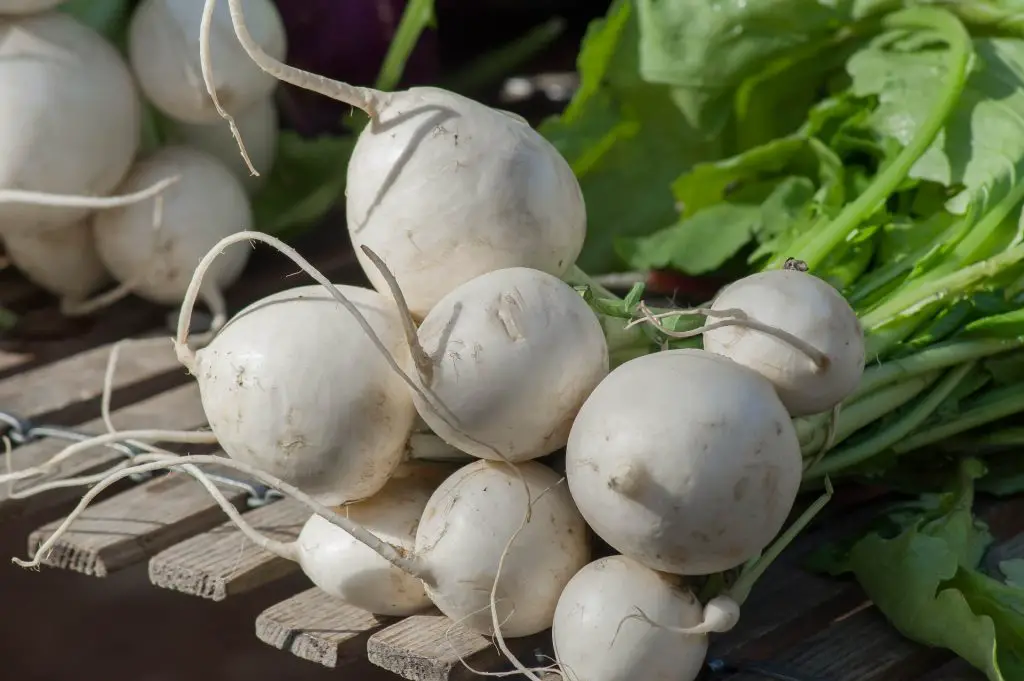
It seems most likely that it occurred as a result of the natural hybridization rather than as a result of an intentional breeding program, however this is pure speculation as no written records to support or refute this.
How Do Turnips and Swedes Differ?
Apart from the genetic differences between Turnips and Swedes there is a number of other characteristics. The first and most obvious is the size of the vegetables, Swedes are general much larger that Turnips. The average weight of the Swede is typically around 1 kg (2 lb) where as turnips are typically around 0.5 kg (1 lb).
This additional size also means that Swedes also store for a longer period than Turnips. Swedes can be stored for over 6 months in the right conditions where as Turnips tend to last around 4 to 5 months in storage.
In addition to the size, the general appearance of Swedes and Turnips is different. Turnips are usually white and purple on the outside, though pure white varieties also exist, with very white flesh, however the flesh can also a golden yellow, or red-veined.
Swedes are yellowish on the bottom where they have been in the ground and the area exposed to light tends to be brown or dark purple colour. The flesh is yellow colour though the precise tone can vary at bit.
As far as flavour goes swedes have a delicate and relatively sweet flavour when compared to Turnip. The level of sweetness increases if the Swedes are exposed to frosts. As a result of this characteristic countries with cooler climates tend to produce better tasting Swedes. The flavour of a Turnip tends to have a slightly more radishy character to it.
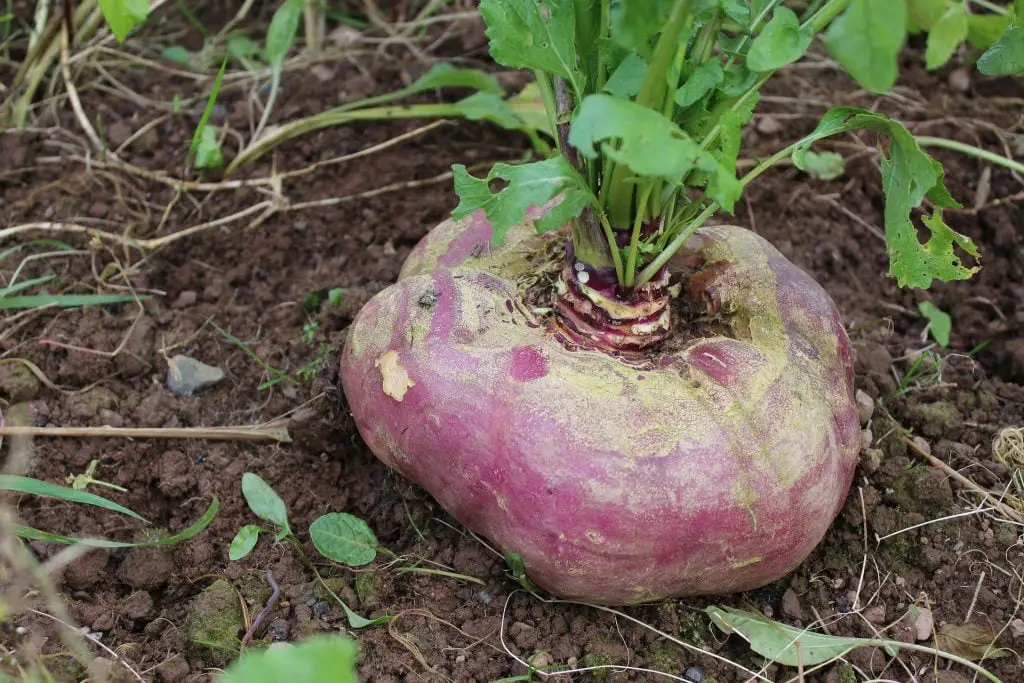
How to Use Turnips and Swedes
Many people are not that familiar with Swedes and Turnips and often don’t quite know what to do with them in the kitchen. However of the most part they can be treated the same way as you treat potatoes. They can be roasted, mashed and fried in the same way as potatoes.
The primary benefit of using Swede or Turnip over Potato is the health benefits. These vegetables have around one quarter the number of carbohydrates of potatoes making them an excellent alternative for those people that want to loss weight or are diabetic. Similar benefits can be achieved using other lesser know vegetables such as Kohlrabi and Jerusalem Artichoke.
How to Grow Turnips and Swedes
Swedes
Swedes are a slow growing vegetable that is best planted in early to mid summer to ensure that there is adequate growth before the first frost arrives. When growing Swedes from seeds it is best to start them off indoors in a protected area that is not too hot. This will prevent the seed tray from drying out in the hot whether.
Seeds can be purchased relatively cheaply from Seeds Now if you live in the US, however the seed will be listed under name Rutabaga or in the UK from Thompson & Morgan. Alternatively, a wider variety of different varieties can be found on Amazon, but the seeds are more expensive.
Seeds are best sown 2 per cell and then thinned to the strongest plant after a few weeks. The seedlings will take around 4 to 6 weeks before they are ready to plant out in the garden. When planting them out they should be placed 30cm (1 ft) apart.
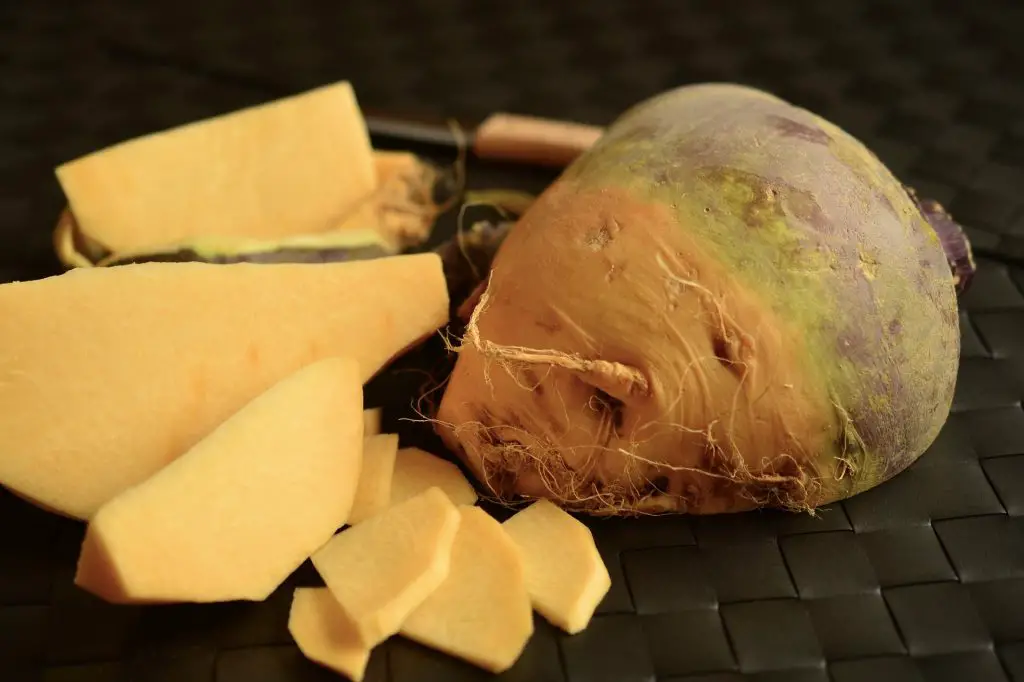
Swede prefer a sunny location with moist and well drained soil. However, given that the temperatures you are planting the seedlings at are likely to be relatively warm it may be necessary to protect the seedlings on really hot days from direct sunlight. This can be done by using an up turned box, an umbrella or shade cloth.
Additionally, during these period of heat stress it is important to ensure that the seedlings are watered frequently. Early on it may be necessary to water daily to sure the plants do not die.
Once the seedlings have become established and the temperatures have moderated somewhat the only maintenance required is to remove any weeds that appear. The Swedes can harvested at any stage once the roots reach a reasonable size. This will typically be around mid Autumn.
Turnips
Turnips can be planted in either Spring or Summer depending upon when you want to eat them. Generally most people plant them in mid Summer simply because in spring there are a wide range of other things that you would rather eat.
Like Swedes we recommended starting the plants out in modular seed trays. However, unlike Swede it is recommended that they are sown in clumps of 4 plants in the garden. To achieve this it best to sow 5 seeds per cell and thin the seedlings to achieve the desired number of plants per clump. Seeds can be purchased from either Seeds Now or Seeds for Generations.
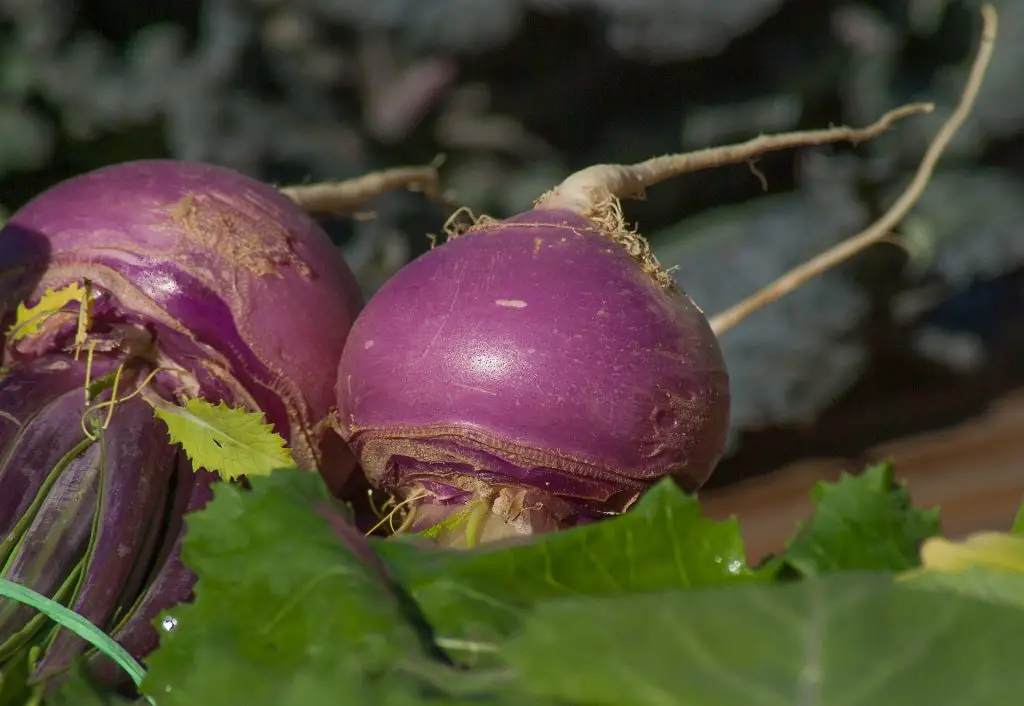
This method, known as multisowing, is one that has been recommended by the well known author Charles Dowding, click the link to visit his website to learn more. The advantage of this technique is that it will save both time and space as it is much fast to plant out clumps rather than individual plants.
Additionally, when planting out clumps you will find that you can fit more plants in and the size of the root is unaffected. However, assumes that you stick to a maximum of 4 plants per clump, as any more than that will start to affect the size of the root.
The seedlings will be ready to plant out into the garden in 4 to 6 weeks. When planting them out the clumps of Turnips should be spaced around 30 cm (1 ft) apart. Turnips prefer a similar position and conditions to Swedes. Additionally, the need to product young seedlings in hot whether also applies.
However, the rate of growth of turnips is alittle faster than Swedes and harvests can be taken as soon as the Turnips reach a reasonable size. If you chose to grow in clumps you will find that the roots will develop at different rates within the clump. It is best to remove the larges roots gently by twisting them out as this will minimise disturbance and allow the small roots to continue develop. This creates the opportunity to spread the timing of the harvest.
If you are planning to store Turnips over the winter it is best to allow them to increase in size as larger roots will store better.
How To Store Swedes and Turnips
Swede and Turnips can be pretty much stored in the same way. Both vegetables are easy to store as in many climates it can simply be left in the garden and picked as needed. Swedes and Turnips can be stored when the soil can be protected from freezing. The ideal temperature to store these vegetables is 35 to 40°F (2 to 4° C).
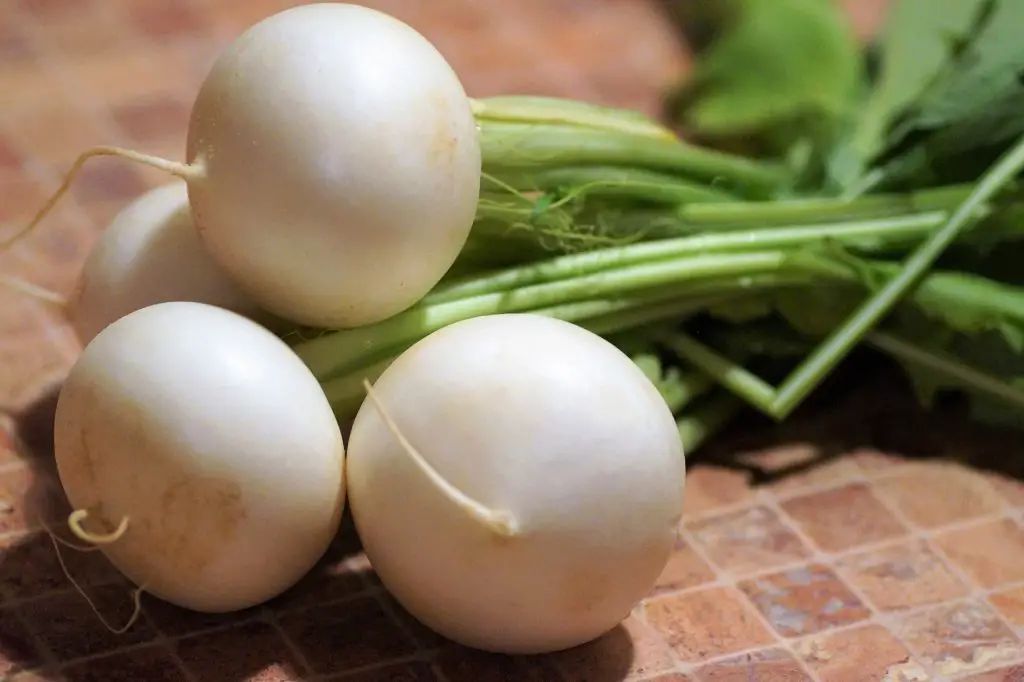
In places where temperature gets below that level the roots can be insulated with mulch. To do this place a layer that is 10 to 12 inches (25 to 30cm) thick of leaves, hay, or straw mulch over the roots. When covering the roots it is a good idea to extend the area being covered by around 2 ft (60 cm) on either side of the roots. The extended area will ensure the ground is adequate protected even when covered with a thick layer of snow.
The roots can be removed throughout the winter as needed, however they need to be harvested before new top growth appears in spring. If left beyond this period the Swedes and Turnips will become woody an inedible.
If the climate is extreme and the roots can’t be protected from frozen soil, they will need to be dug up. Once removed from the garden they will need to be stored in container filled with damp sand. When packing them ensure that the completely surrounded by the sand and to do not touch one another. Store the container in a root cellar, basement or in a garage where the temperature doesn’t get too cold, about 32 to 38°F (0° to 3°C) is ideal.
In these conditions Swedes will store for around 6 months and Turnips will store for 4 months however it is import to regularly check the roots and remove any ones that are showing signs of deterioration.
